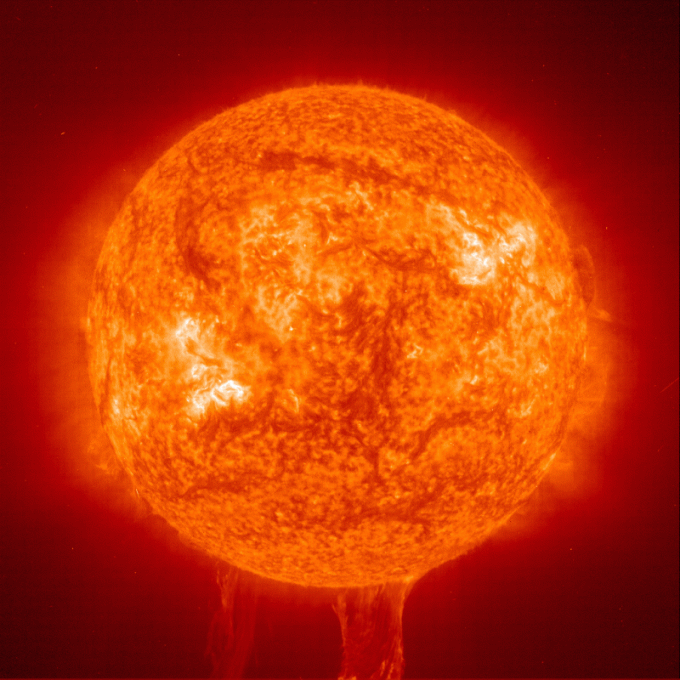Instruction
1
The sun is one hundred millions of stars in the milky Way galaxy, and the largest is about the 4th place among them. According to the spectral classification of the Sun is a yellow dwarf and its age, according to approximate calculations, about 4.5 billion years. Currently the Sun is in the middle of its life cycle. Closest to the Sun is a star called Proxima Centauri and is at a distance of 4 light years. Distance from the Earth to the Sun is 150 million km, the distance light passes in 8 minutes. The sun is at a distance of 26 thousand light years from the center of the galaxy, and the speed of its rotation relative to the center is 1 turn for 200 million years.
2
When the Sun will reach the age of around 7 billion years, this star will become a red giant. Its outer shell will expand and reach the orbit of the Earth or even Saturn, pushing these planets in the far distance. A star composed of hydrogen 92% of helium and 7% having a very complex structure.
In the center of the Sun is its core, the radius of which is approximately 150000 - 175000 km, which is about 25% of the total radius of the star. In the center of the core temperature reaches 14 000 000 K. the Core rotates around its own axis at high speed, which significantly exceeds the performance of the external envelope of the star. Here the reaction is formed from 4 protons helium, which emits large amounts of energy. It is emitted from the photosphere as the kinetic energy and light.
In the center of the Sun is its core, the radius of which is approximately 150000 - 175000 km, which is about 25% of the total radius of the star. In the center of the core temperature reaches 14 000 000 K. the Core rotates around its own axis at high speed, which significantly exceeds the performance of the external envelope of the star. Here the reaction is formed from 4 protons helium, which emits large amounts of energy. It is emitted from the photosphere as the kinetic energy and light.
3
Over the core of the Sun is the radiation transfer zone with temperatures around 2 to 7 million K For this area should be convective zone at a depth of about 200 thousand. km. In this area there is no re-emission, and energy transfer, here is the mixing of the plasma. The temperature of the surface of this layer is about 5800 K. the Photosphere, the visible surface of the component stars, is the main part of the solar atmosphere along with the chromosphere. The last outer shell of the star is the crown of the outer part of the solar wind - the stream of ionized particles.
4
Life on Earth survives only by the Sun. The planet rotates on its axis, and every night man can observe the sunrise and sunset, and at night the stars in the dark sky. On the life of all living things on the planet, the Sun has a huge impact: the star of photosynthesis, promotes the formation of in the human body of vitamin D. the Penetration of the solar wind in the Earth's atmosphere, visible to the naked eye. This is Northern light, which also causes geomagnetic storms. Approximately every 11 years solar activity increases or decreases.



